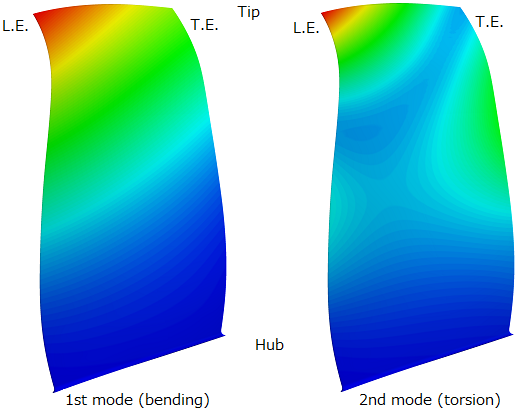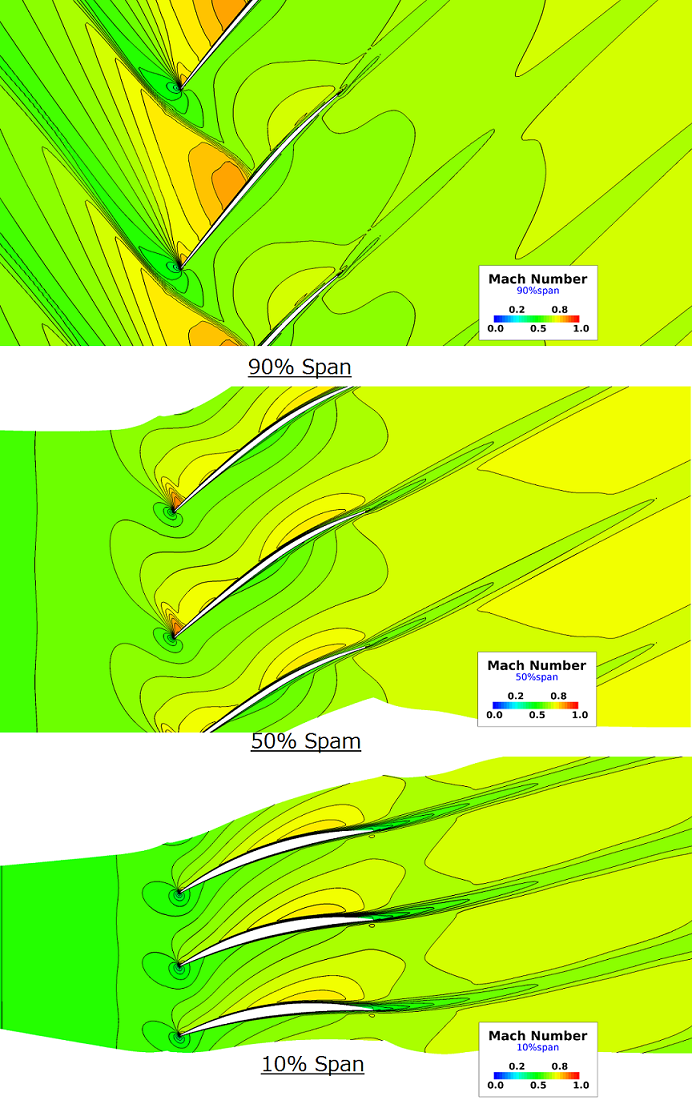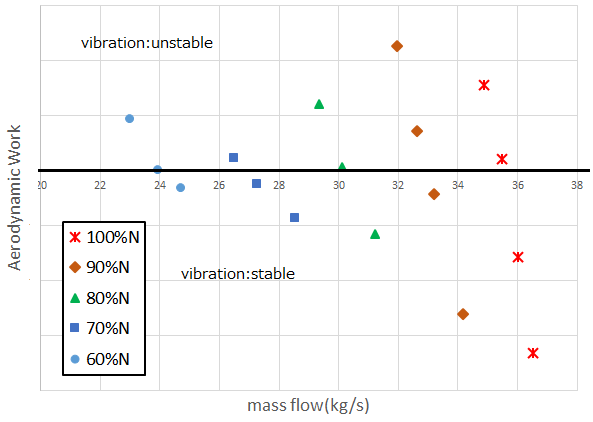aFJR high efficiency fan technology development
JAXA Supercomputer System Annual Report April 2017-March 2018
Report Number: R17EA2710
Subject Category: Aeronautical Technology
- Responsible Representative: Toshio Nishizawa, aFJR Project Team, Aeronautical Technology Directorate
- Contact Information: Junichi Kazawa kazawa.junichi@jaxa.jp
- Members: Junichi Kazawa, Shunji Enomoto, Toshio Nishizawa, Susumu Kato, Kenshi Yamashita
Abstract
The purpose of aFJR project is to advance research on jet engine component technologies so that Japanese manufacturers can join more effectively in international joint-development projects on next-generation jet engines. To compensate for increasing fan diameter, we are developing lightweight fan blades that have higher aerodynamic efficiency by applying advanced simulation technology and composite materials evaluation technology.
For the development of high efficiency laminar flow fan blade technology in aFJR project, it is necessary to investigate the possibility that laminar flow fan blade design adversely affects fan flutter.
Reference URL
Please refer to ‘aFJR (Advanced Fan Jet Research) project | ECAT – Environment-Conscious Aircraft Technology Program | Aeronautical Technology Directorate‘.
Reasons for using JSS2
Flutter simulation is useful for increasing the certainty of aFJR project and super-computers are required for this type of transition simulation.
Achievements of the Year
For the fan blades used in the demonstration test, the flutter occurece point in a wide range of operation area was predicted. This made it possible to avoid flutter in the demonstration test.
Publications
N/A
Usage of JSS2
Computational Information
- Process Parallelization Methods: MPI
- Thread Parallelization Methods: N/A
- Number of Processes: 96
- Elapsed Time per Case: 120.00 hours
Resources Used
Fraction of Usage in Total Resources*1(%): 1.58
Details
Please refer to System Configuration of JSS2 for the system configuration and major specifications of JSS2.
| System Name | Amount of Core Time(core x hours) | Fraction of Usage*2(%) |
|---|---|---|
| SORA-MA | 6,831,961.84 | 0.91 |
| SORA-PP | 742,527.45 | 9.30 |
| SORA-LM | 0.00 | 0.00 |
| SORA-TPP | 267,950.51 | 29.90 |
| File System Name | Storage Assigned(GiB) | Fraction of Usage*2(%) |
|---|---|---|
| /home | 027.70 | 0.02 |
| /data | 7,194.98 | 0.13 |
| /ltmp | 3,915.55 | 0.30 |
| Archiver Name | Storage Used(TiB) | Fraction of Usage*2(%) |
|---|---|---|
| J-SPACE | 9.63 | 0.41 |
*1: Fraction of Usage in Total Resources: Weighted average of three resource types (Computing, File System, and Archiver).
*2: Fraction of Usage:Percentage of usage relative to each resource used in one year.
JAXA Supercomputer System Annual Report April 2017-March 2018





